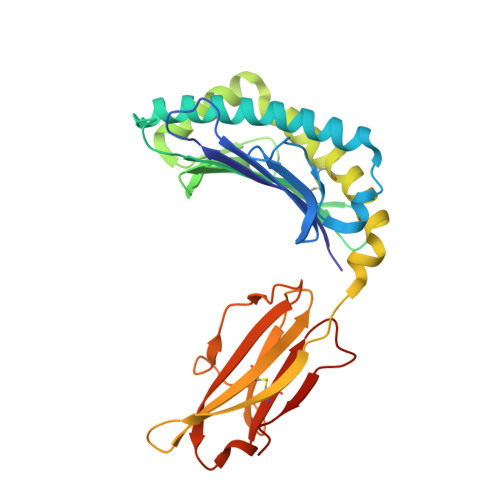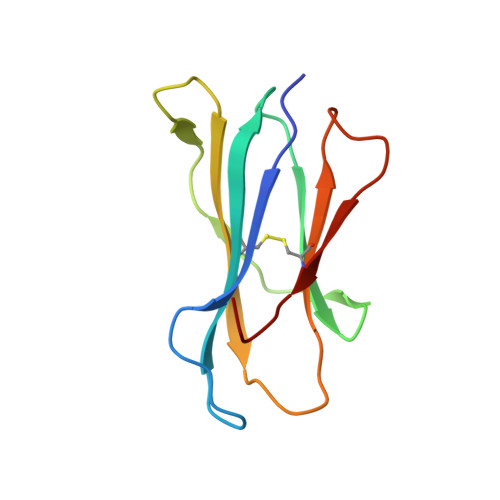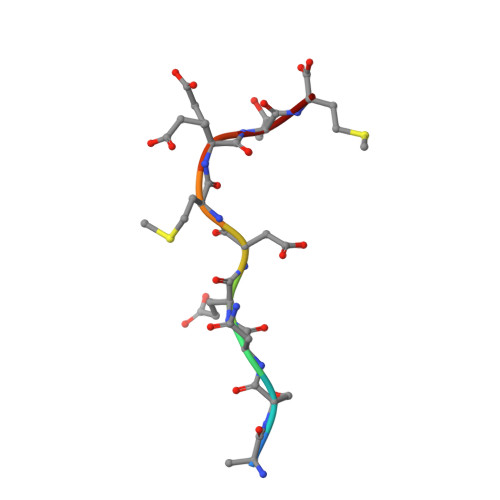Acute emergence and reversion of influenza A virus quasispecies within CD8(+) T cell antigenic peptides.
Valkenburg, S.A., Quinones-Parra, S., Gras, S., Komadina, N., McVernon, J., Wang, Z., Halim, H., Iannello, P., Cole, C., Laurie, K., Kelso, A., Rossjohn, J., Doherty, P.C., Turner, S.J., Kedzierska, K.(2013) Nat Commun 4: 2663-2663
- PubMed: 24173108
- DOI: https://doi.org/10.1038/ncomms3663
- Primary Citation of Related Structures:
4L8B, 4L8C, 4L8D - PubMed Abstract:
Influenza A virus-specific CD8(+) cytotoxic T lymphocytes (CTLs) provide a degree of cross-strain protection that is potentially subverted by mutation. Here we describe the sequential emergence of such variants within CTL epitopes for a persistently infected, immunocompromised infant. Further analysis in immunodeficient and wild-type mice supports the view that CTL escape variants arise frequently in influenza, accumulate with time and revert in the absence of immune pressure under MHCI-mismatched conditions. Viral fitness, the abundance of endogenous CD8(+) T cell responses and T cell receptor repertoire diversity influence the nature of these de novo mutants. Structural characterization of dominant escape variants shows how the peptide-MHCI interaction is modified to affect variant-MHCI stability. The mechanism of influenza virus escape thus looks comparable to that recognized for chronic RNA viruses like HIV and HCV, suggesting that immunocompromised patients with prolonged viral infection could have an important part in the emergence of influenza quasispecies.
Organizational Affiliation:
Department of Microbiology and Immunology, University of Melbourne, Parkville, Victoria 3010, Australia.

















